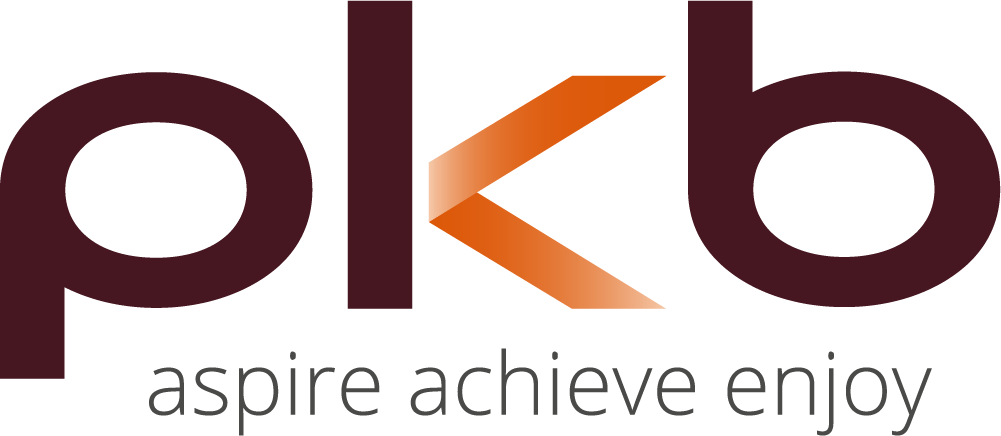Making Tax Digital
The Government’s plan to introduce a fully digital tax system will change the way taxpayers record and report their income to HM Revenue & Customs (HMRC). PKB Accountants can provide full support and guidance to assist you with the transition and ensure your systems comply with requirements.
Making Tax Digital (MTD) is intended to bring the UK tax system into the 21st century by providing businesses with a modern, streamlined system to keep their tax records and provide information to HMRC. The timetable for rolling out Making Tax Digital has been amended to ensure that small businesses have more time to prepare for the changes.
The first to be affected will be small businesses and individuals with a turnover above the VAT threshold of £85,000. Those who fall into this bracket will be required to keep digital records for VAT purposes from April 2019.
What’s the point of Making Tax Digital?
- Replacing paper-based bookkeeping with digital tax accounts will let you check that the information HMRC holds about you is 100% correct.
- Making Tax Digital’s new reporting function will allow HMRC to look at your tax information almost immediately, reducing human error from data input.
- HMRC anticipates taxpayers will better understand how much tax is owed within the digital tax account – much like online banking.
- Making Tax Digital will make it easier for you to contact HMRC online via web chats and secure messages.
If you’d like help switching to online accounting
At PKB, we’re proud advocates of the ClearBooks, Sage 50 Cloud and Xero Online Accounting systems. They have helped many of our clients to create accurate, real-time accounting records. If you’d like help moving over to ClearBooks, Sage, Xero or any of the other online accounting software that we support, or you simply need help upgrading your existing software, contact us for more information about how we can help make the transition seamless.
Making Tax Digital Step One: Check your business is not exempt
If any of the following exemptions apply to your business, contact the VAT Helpline on 0300 200 3700.
Smaller businesses
MTD is compulsory for VAT-registered businesses with a turnover of £85,000 or above. If your business turnover is below that threshold and you’re VAT registered, you can choose whether or not to register for MTD.
If you choose not to register, you’ll have to check your turnover at the end of each month. If in the previous 12 months it’s more than the VAT-registration threshold applying on the first day of the following month, you should start to apply the MTD for VAT rules from the start of your next VAT accounting period.
“Non-practical”
HMRC may allow you to be exempt from MTD where it’s not practical for you to keep and submit digital records. Nope, we’re afraid “being a technophobe” doesn’t count. Acceptable practical reasons could be that you run your business from a remote location without internet access, you have a disability or your age makes it hard for you to keep digital records.
Religious Societies
If your business is run entirely by people whose religious beliefs prevent them from using computers, you could be exempt from MTD.
Insolvency
If an insolvency procedure is in place, an exemption from MTD for VAT may be granted.
Making Tax Digital Step Two: Upgrade to “functional compatible software”
Functional compatible software is the cornerstone of MTD for VAT. It will be used to maintain compulsory digital records, calculate the return and submit it to HMRC via an Application Programme Interface (API).
“Functional compatible software” is simply the name given to a software programme (or set of software programmes), capable of:
- Recording and preserving records in an electronic form;
- Providing information and returns from the records to HMRC in electronic form, using the API platform;
- Receiving information from HMRC.
It’s possible to mix and match software – the complete set of digital records needed for MTD for VAT don’t need to be held in one piece of software. As long as there is a link between the different pieces of software, the records can be held in a range of acceptable digital formats.
The link between the software is the key and it’s a legal requirement where a set of compatible software programs is used.
HMRC has just released a list of software companies who have committed to providing compatible products ready for the pilot phase of Making Tax Digital – you can see the full list here.
If you’re already using accounting software, check to see the manufacturer is on the list. If they’re not, get in touch with them and find out if they’re planning to launch compatible software in time for the April 2019 deadline.
If you’re not already using accounting software, now is the time to switch over to it. PKB can help with this if you need further advice.
Making Tax Digital Step Three: Understand the digital records you need to keep
As well as submitting your VAT returns online, HMRC requires you to keep certain records online, using Functional Compatible Software. Furthermore, this has to remain accessible for six years.
The VAT account
The VAT account provides the link between the digital VAT records and the VAT return submitted to the Revenue. Under MTD for VAT, the information which must be held in the VAT account must be maintained digitally. This is referred to as the “electronic account”.
To demonstrate a link between the output tax in the business records and the output tax on the VAT return, the electronic account must contain a record of:
- Output tax owed on sales;
- Output tax owed on acquisitions from other EU member states;
- Any tax to be paid on a supplier’s behalf under a reverse charge procedure;
- Any tax owed following a correction or error adjustment;
- Any other adjustment required by the VAT rules.
Similarly, to demonstrate the link between the input tax in the business records and the input tax on the VAT return, the electronic account must contain a record of:
- Input tax which can be claimed on business purchases;
- Input tax allowable on acquisitions from other EU member states;
- Tax that can be reclaimed following a correction or error adjustment;
- Any other necessary adjustment.
Where adjustments are required, only the total value for each type of adjustment will need to be kept digitally.
Data
Your business’s name, registered address, VAT-registered number and a record of any accounting schemes must all be recorded digitally.
Supplies In
Each supply your business receives must be recorded digitally too. You need to log:
- Date;
- Time;
- Value (including any VAT that cannot be reclaimed);
- Total amount of input tax to be claimed.
If there is more than one supply on an invoice, the totals from the invoice can be recorded.
Supplies Out
Every supply made by your business must be recorded, including the:
- Date;
- Time;
- Worth;
- Amount of VAT charged.
Multiple supplies made at the same time don’t have to be recorded separately — you can simply record the total values, providing VAT is charged at the same rate.
A record must also be kept of output values for the period split between standard rate, reduced rate, zero rate, exempt and outside the scope outputs.
Making Tax Digital Step Four: Relax! We can help
If you need help making the switch to MTD, PKB is here to help. We specialise in making accountancy understandable, easy and relevant for businesses owners, so we’d love to help. Simply contact us to find out how we can get you digitally ready, without the tears.
Ryan Firth
“We support a range of online accounting software packages and can assist you in identifying the most suitable one for your business. Making Tax Digital is just around the corner so don’t leave it until the last minute.”


